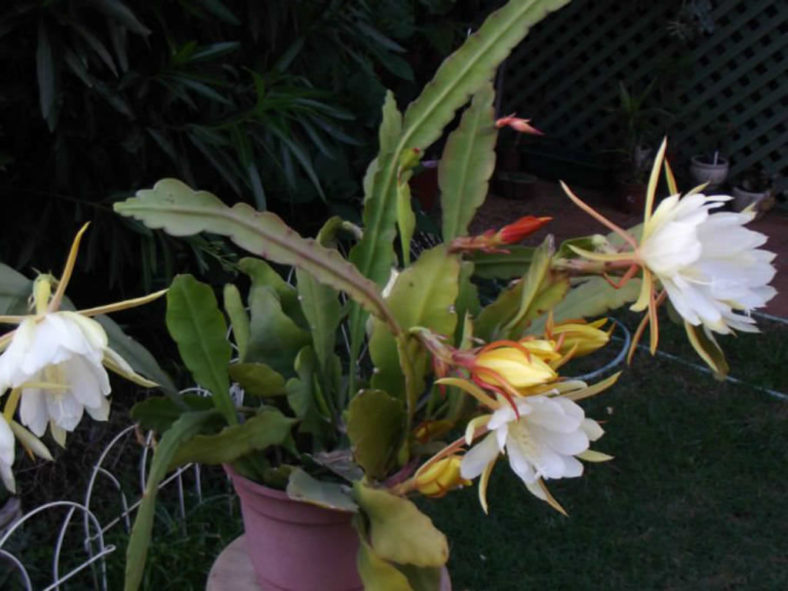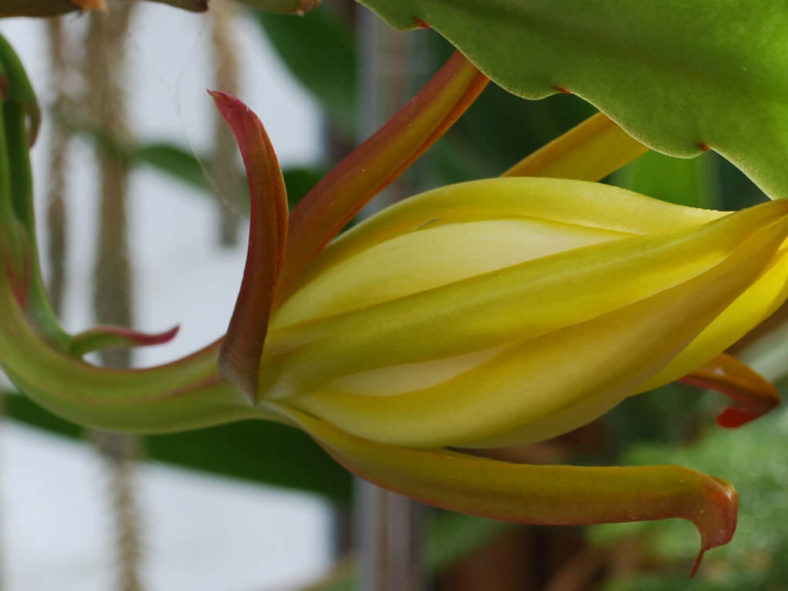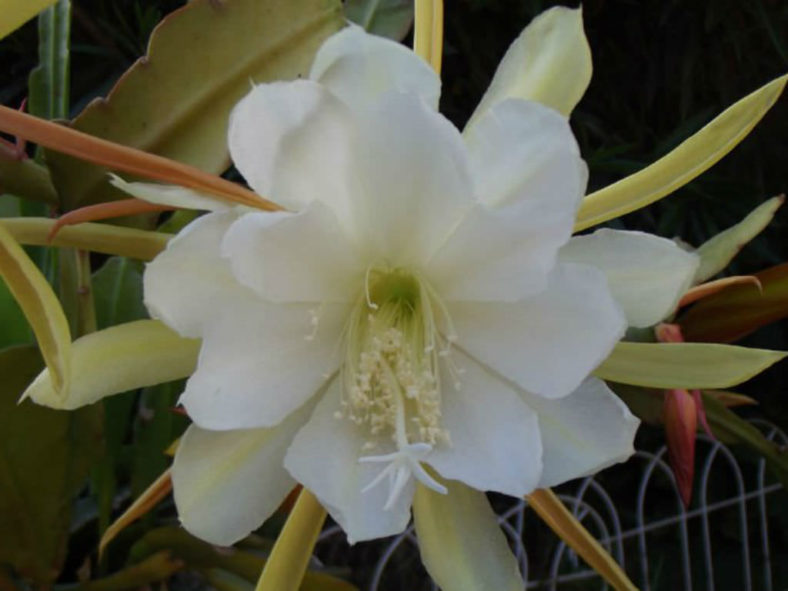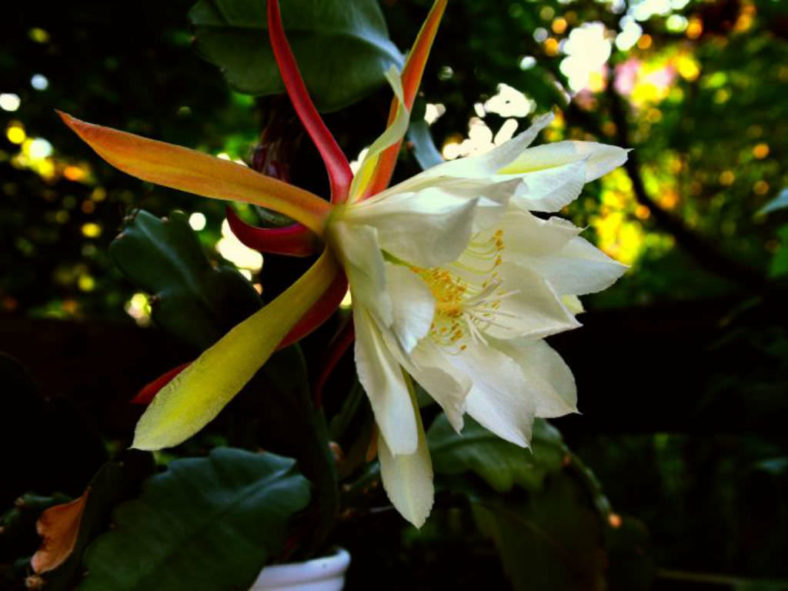Scientific Name
Epiphyllum laui Kimnach
Common Name(s)
Orchid Cactus
Scientific Classification
Family: Cactaceae
Subfamily: Cactoideae
Tribe: Hylocereeae
Genus: Epiphyllum
Etymology
The specific epithet "laui" (pronounced "LAU-eye") honors Alfred Bernhard Lau (1928-2007), a German missionary and plant collector in Mexico, who collected the type specimen of this species.
Origin
Epiphyllum laui is native to Mexico (Chiapas). It grows as an epiphyte or lithophyte at elevations from 5,905 to 6,560 feet (1,800 to 2,000 m).
Description
Epiphyllum laui is a highly branched cactus with flat, shiny green stems, often reddish or brownish at the apex, with a subterete base, crenate margins, and prominent midrib. The stems are smooth, branch basally or laterally, and can measure up to 2.8 inches (7 cm) in width. The hair-like, brownish-yellow spines are mainly present in the subterete part of the stems.
The flowers are funnel-shaped and appear in spring, opening in the evening and remaining fully expanded for two days. They can reach a length of 6 inches (15 cm) and nearly equal diameter. The outer petals are yellow, while the inner ones are white. The fruits are carmine, pink when fully ripe, and contain white flesh and tiny black seeds. They are oblong, often ribbed, and can grow up to 3.2 inches (8 cm) long and 1.6 inches (4 cm) in diameter.

How to Grow and Care
Hardiness: USDA hardiness zones 10b to 11b: from 35°F (1.7°C) to 50°F (10°C).
Epiphyllums are hardy to about 50°F (10°C) but require at least 60°F (15°C) during the growing season, so they are best grown in a heated greenhouse, conservatory, or indoors. Place the pots in bright, filtered light with moderate to high humidity. To increase the moisture, position the pot on a tray filled with gravel and keep it topped up with water, but not so much that the water reaches the surface. These cacti require sharply drained growing media. Grow them in standard cactus soil with added grit or perlite. Alternatively, mix three parts of loam-based compost with two parts grit or perlite and one part peat-free multipurpose compost.
Overlong stems can be cut off or shortened. New shoots will usually develop just behind the cut. However, be careful not to overwater after pruning, as the plant's water requirements will be reduced. Large Epiphyllums can become unstable in their pots. Repot into a heavier pot, such as terracotta, or a wider container, such as a pan. Alternatively, try canes and tying the stems up, but this can look unsightly.
See more at How to Grow and Care for Epiphyllum.
Links
- Back to genus Epiphyllum
- Succupedia: Browse succulents by Scientific Name, Common Name, Genus, Family, USDA Hardiness Zone, Origin, or cacti by Genus
Photo Gallery
Click on a photo to see a larger version.


